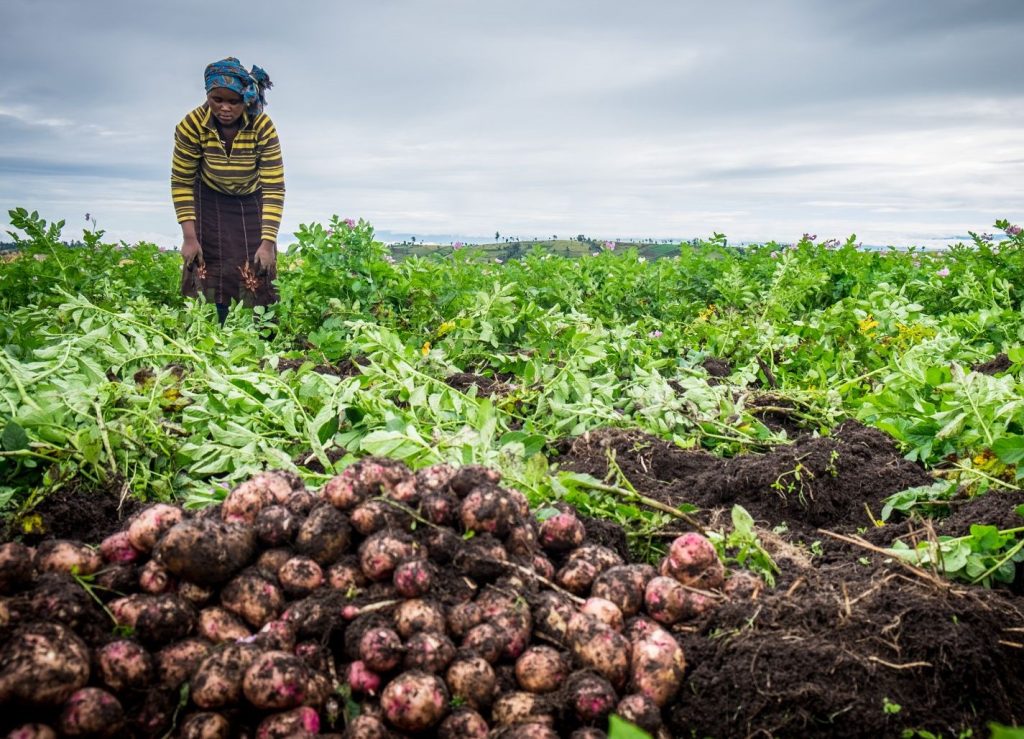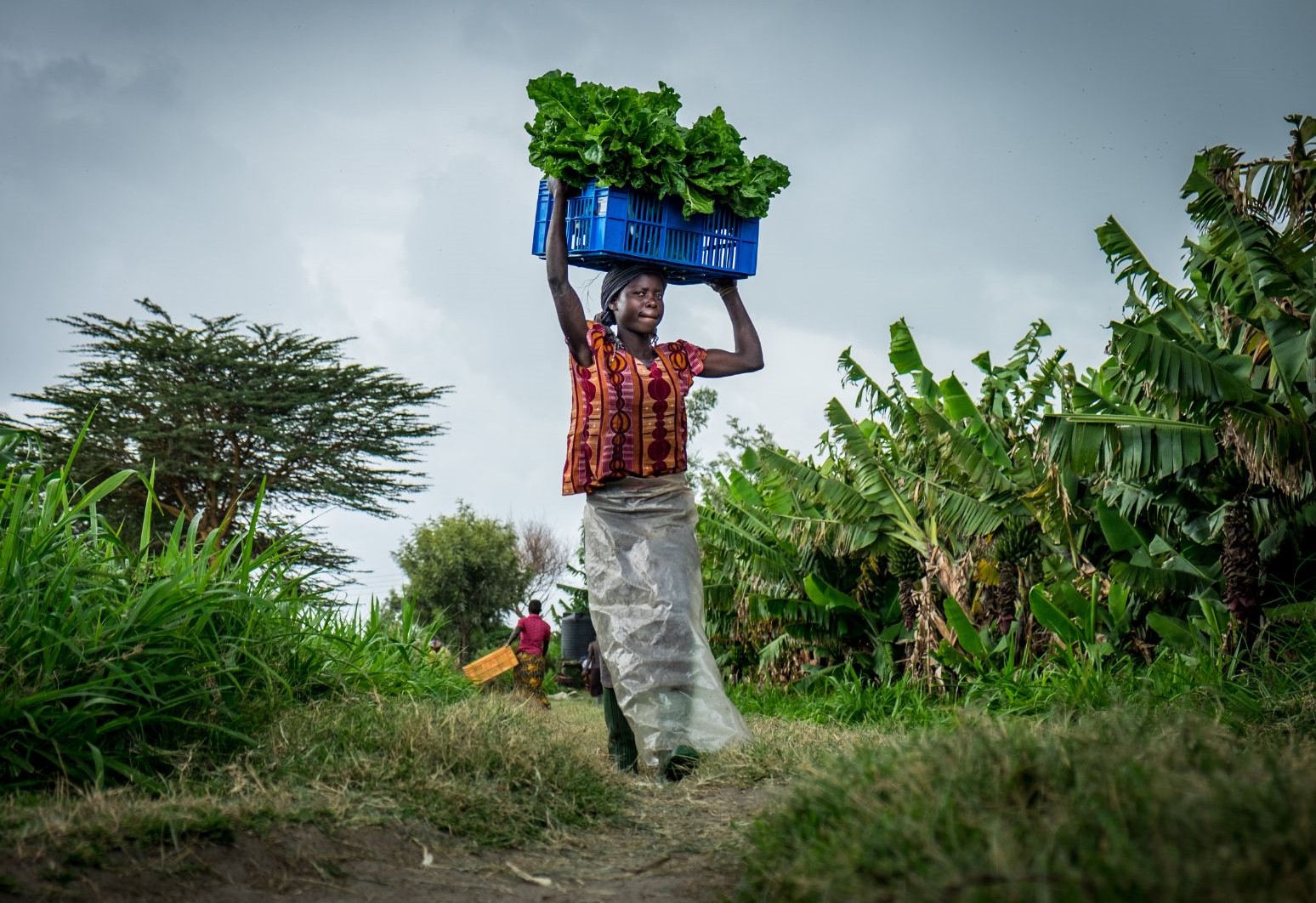Strategies for Small-Scale Farmers in Tropical Africa to Adapt to Climate Change
Climate change is a big problem for agriculture in tropical Africa. It affects food stability, water supply, and the way smallholder farmers make a living. Farmers who depend a lot on rain-fed farming are especially vulnerable to the bad effects of changing weather trends, rising temperatures, and extreme events. Small-scale farmers must find ways to adapt to climate change that deal with these problems while maximizing output and preserving resources if they want to be resilient and stay in business for a long time. This piece looks at how climate change is affecting farming in the area and gives small-scale farmers steps they can take to adapt.
How climate change affects farming
Small-scale farmers in warm Africa need to know how climate change affects their farming practices so they can come up with good ways to adapt. Traditional farming methods are being changed by climate change, which is causing temperatures to rise, changing the rain patterns, and making droughts and storms worse. When droughts last for a long time, food yields go down, and there isn’t enough water. When it rains a lot, the soil gets washed away, and there are more pests and diseases. Rising temperatures also make it easier for pests and diseases to spread, which makes it harder for farmers to get stable food yields.
Adopting and Cultivating crops that can survive droughts to improve resilience
Small farmers can make themselves more resilient by growing crops that are not affected dramatically(die) by drought. Plant breeders have made crop types that can handle drought, high temperatures, and pests. These are called climate-smart crops [5]. These drought-tolerant crops, like drought-resistant maize, millet, and sorghum, can help raise yields even when the weather is bad. Farmers can work with agricultural extension programs and local research institutions to get access to and use these climate-resilient varieties.
Using water-saving techniques to deal with water scarcity
Small-scale farmers are worried about climate change because they don’t have enough water. Farmers can do the following things to save water and use it more efficiently [3]:
Rainwater gathering: When it’s dry, Nigerian farmers can get the most out of their available water by using rainwater gathering techniques, like collecting water from roofs and putting it in tanks. The International Institute of Tropical Agriculture (IITA) and other groups have been helping farmers in Nigeria set up simple methods to collect rainwater on their farms. This method gives people an extra way to get water during prolonged drought, especially in places where it doesn’t rain often and there aren’t many water sources.
Drip irrigation: Nigerian farmers have found that drip irrigation systems have helped them save water and get the most out of their crops. Through projects like IITA, drip irrigation has been shown to small-scale farms, and its use has been encouraged. This method reduces the amount of water that is wasted and makes the most of the water that is used [3]. Farmers who use drip irrigation say that their crops are performing better and use less water, especially in places where water is scarce.
Climate-Smart Water Management: Smallholder farmers can be more resilient to climate change by using climate-smart water management methods in areas where there isn’t much water. By using techniques like water-efficient watering systems, collecting rainwater, and storing water on the farm, farmers can save water and make sure they have a steady supply of water during dry times. Also, methods for managing water can help stop soil erosion, keep water from getting into the ground, and help crops grow even when the weather changes.
Mulching: In Nigeria, organic mulching methods have been shown to reduce water loss and improve soil health. Agricultural groups like IITA try to get farmers to use organic mulch on their farms. Putting crop residues or plant waste on top of the soil helps keep the soil moist, cuts down on water loss, and improves the structure of the soil. Mulching has been shown to be a cost-effective way to improve soil nutrition, stop soil erosion, and make crops more resistant to bad weather. 
The numerous benefits of farming in an Agroforestry system
By planting trees next to crops, farmers can increase their income, make the land more fertile, and protect their crops from extreme weather [8]. Agroforestry methods keep the soil from washing away and protect crop yields when it rains a lot.
Smart practices to help farmers adapt to climate change
To adapt to climate change, smallholder farmers need to use smart methods that boost output and make them less vulnerable to climate risks[7]:
- Agroforestry: Adding trees to crops gives farmers more ways to make money, improves the land, and protects them from bad weather [4].
- Conservation agriculture: Using methods like minimum tillage, crop rotation, and cover cropping helps the health of the soil, reduces soil erosion, and makes it easier for water to stay in the soil [3].
- Climate-Adaptive Livestock Management: The effects of heat stress on livestock can be reduced by having a variety of livestock species, growing feed crops that can survive in drought, and giving animals shade and water sources [5].
- Integrated Pest Management (IPM): When smallholder farmers use IPM practices, they can control pests and diseases more successfully while using less chemical pesticides. IPM uses a variety of methods, such as crop rotation, biological control, and crop types that are resistant to pests and diseases, to keep pests and diseases from becoming too bad [10]. By encouraging natural pest feeders and using non-chemical control methods, farmers can lessen the effects of pests and diseases on their crops and reduce the risk of yield loss due to changing climate conditions.
- Getting information about the weather and early warning systems: Small-scale farmers need timely access to climate knowledge and early warning systems in order to make good decisions. Farmers can get weather forecasts, advice, and early warning messages if they work with meteorological agencies and NGOs. These information services help farmers plan when to plant and gather crops, deal with pests and diseases, and find water [6].
Conclusion
Climate change is a fact that can’t be denied, and it makes life hard for small farmers in warm Africa. But proactive strategies for adapting to climate change can help farmers become more resilient, increase their output, and protect their way of life. Small-scale farmers can do well in a changing climate by growing crops that don’t die in drought, saving water, using climate-smart farming methods, and getting information about the climate. Working with agricultural experts, neighborhood institutions, and government agencies helps farmers get one step closer to being able to deal with climate change and doing agriculture in a sustainable way. Taking action now will help small-scale farmers deal with the effects of climate change and make sure that future generations will have enough food.
References:
- Stockholm Environment Institute, Food and Agriculture Organization of the United Nations. (2022). Investing in Agricultural Water, Sustainably: Recent Trends in Financing Institutions. Authors: Emily Ghosh, Ismail Oudra, Eric Kemp-Benedict, Annette Huber-Lee, Anisha Nazareth. Rome.
- (2013). Climate-Smart Agriculture: A Review of Current Practice of Agroforestry and Conservation Agriculture in Malawi and Zambia. Retrieved from https://www.uncclearn.org/resources/library/climate-smart-agriculture-a-review-of-current-practice-of-agroforestry-and-conservation-agriculture-in-malawi-and-zambia/
- Kabirigi, M., Musana, B., Ngetich, F., Mugwe, J., Mukuralinda, A., & Nabahungu, N. (2015). Applicability of conservation agriculture for climate change adaptation in Rwanda’s situation. Journal of Soil Science and Environmental Management, 6(9), 241-248.
- Raoo, K. P. C., Ndegwa, W. G., Kizito, K., & Oyoo, A. (2011). Climate Variability and Change: Farmer Perceptions and Understanding of Intra-Seasonal Variability in Rainfall and Associated Risk in Semi-Arid Kenya. Published online by Cambridge University Press, 25 March 2011.
- Kaczan, D., Arslan, A., & Lipper, L. (2013). Climate-Smart Agriculture? A review of current practice of agroforestry and conservation agriculture in Malawi and Zambia.
- Jones, P. G., & Thornton, P. K. (2013). Climate-Resilient Crops for Smallholder Farmers in Sub-Saharan Africa. Climatic Change, 119(3-4), 457-467
- International Institute of Tropical Agriculture (IITA). (2020). Scaling up innovations: IITA 2019 Annual Report. Published by the International Institute of Tropical Agriculture, PMB 5320, Oyo Road, Ibadan, Oyo State, Nigeria. ISSN 0331 4340
- One Acre Fund. (2022). Why Climate-Smart Agriculture Is So Important For Smallholder Farmers. Climate Resilience. Retrieved from https://oneacrefund.org/articles/why-climate-smart-agriculture-so-important-smallholder-farmer
- Rockström, J., Karlberg, L., Wani, S. P., Barron, J., Hatibu, N., Oweis, T., … & Farahani, J. (2010). Enhancing Water Use Efficiency in African Agriculture: From Research to Action. Agricultural Water Management, 97(4), 528-536.
- Food and Agriculture Organization of the United Nations (FAO). (2016). Integrated Pest Management (IPM). Retrieved from http://www.fao.org/agriculture/crops/core-themes/theme/pests/ipm/en/
- Aune, J.B. (2018). Crop diversification in Africa: A review of empirical evidence. Food Policy, 77, 1-13.










































































